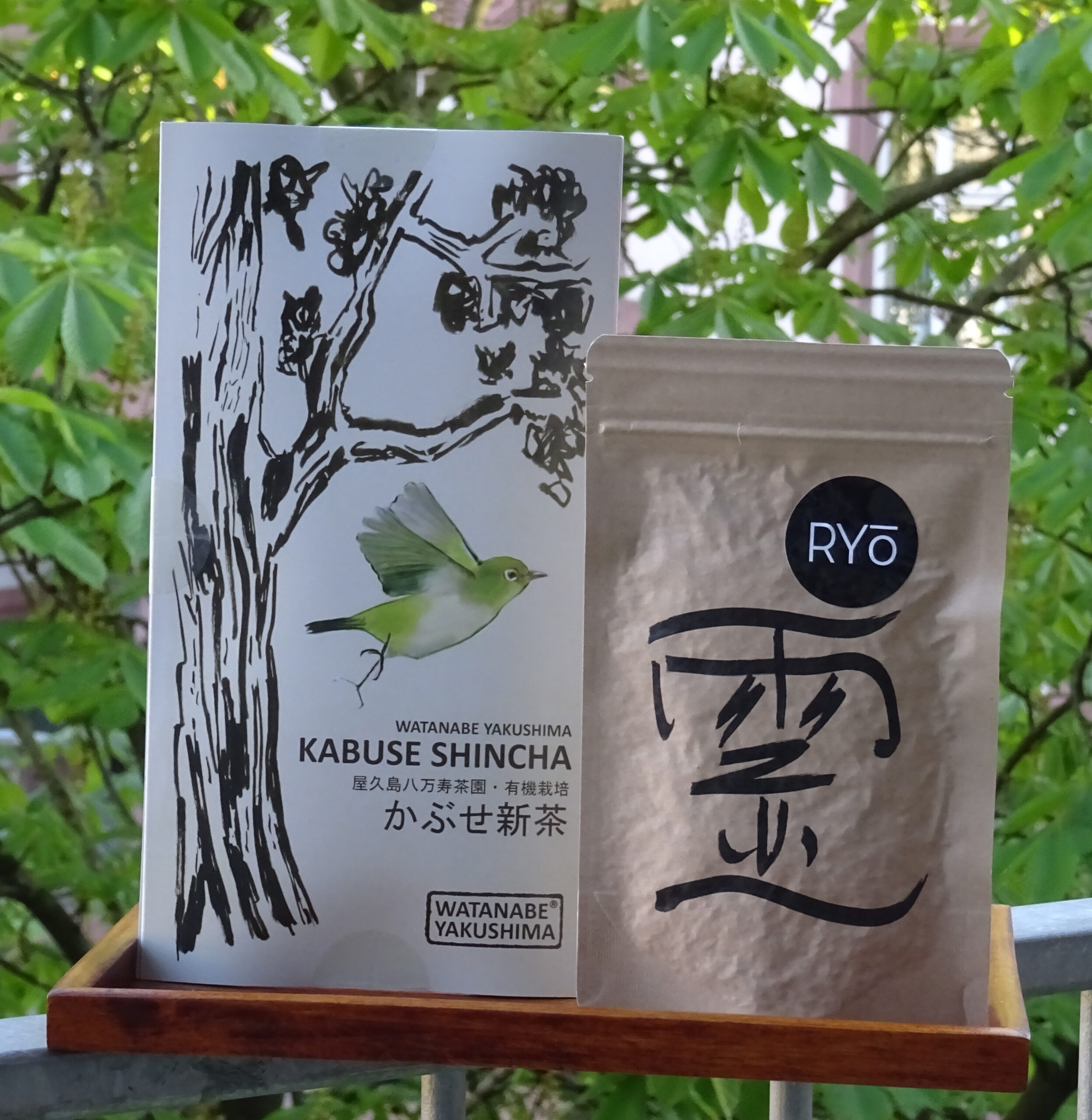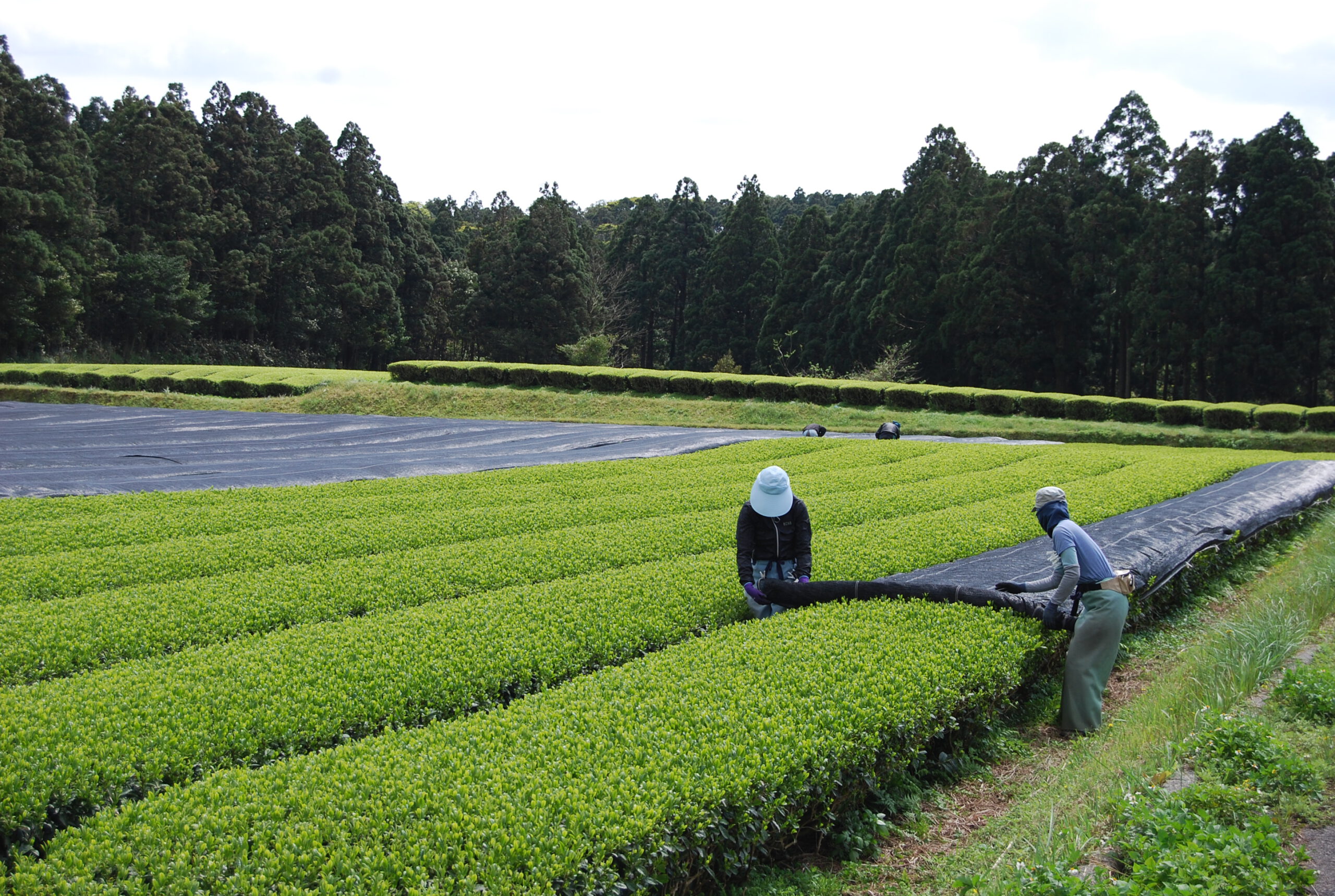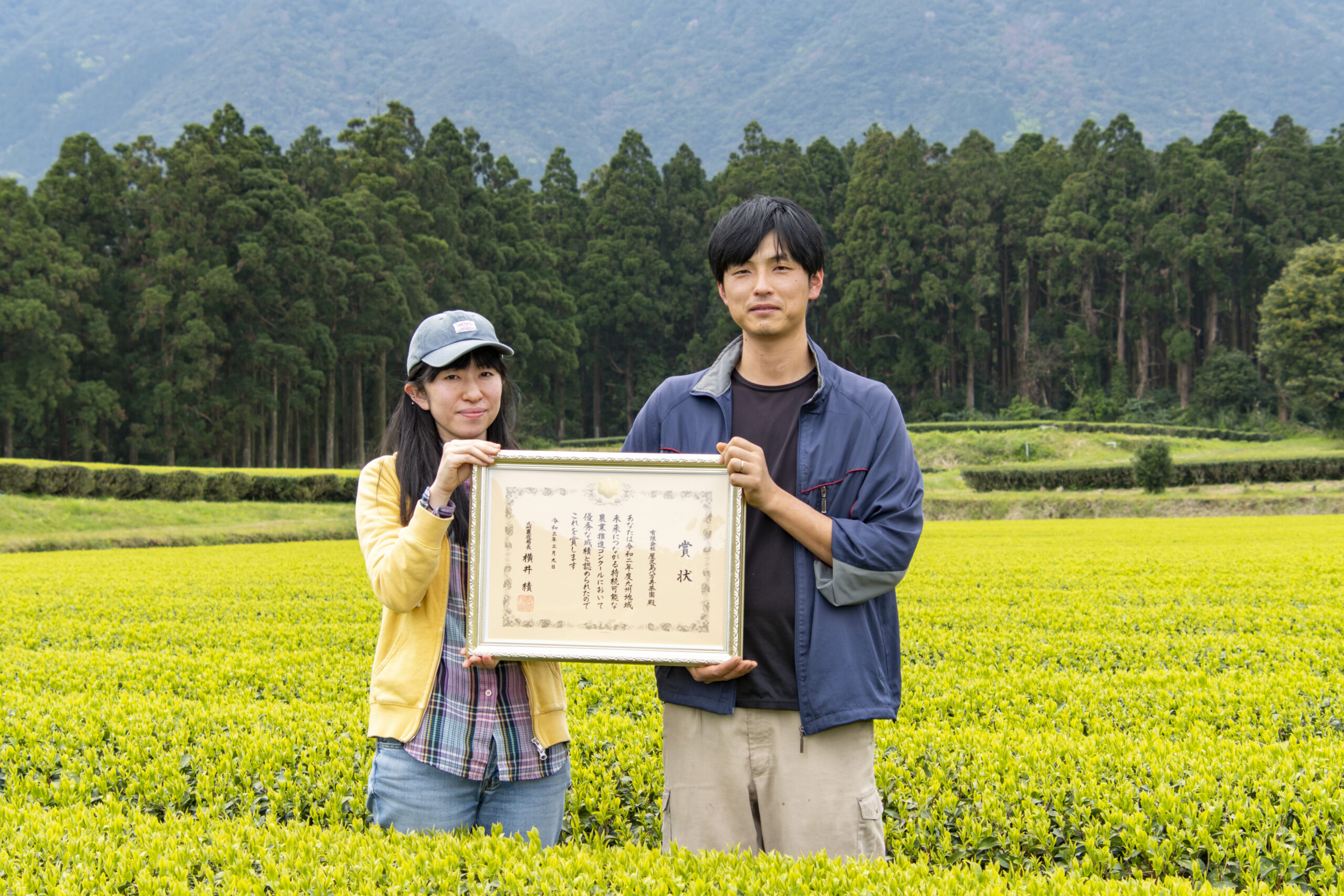This week it’s really all about the shincha. After giving our full attention to the Shincha MOE yesterday, two shinchas from Mankichi and Keita Watanabe from Yakushima are next: Watanabe Kabuse Shincha and the new Ryō Watanabe Aracha Shincha.

…ANOTHER ARACHA SHINCHA. HOW COME?
The idea to offer a new Aracha Shincha came to us over a year ago. When COVID was not yet on everyones minds, we planned a tea seminar on the subject of shincha. This seminar was supposed to take place at the end of May 2020 and unfortunately we have not been able to hold it yet. One important point we wanted to have at the center of the seminar was the importance of the final heating. It is always exciting to taste the potential for the finished tea in the aracha. For the seminar, we asked Keita and Mankichi to send us a generous sample of the aracha (raw tea) of Watanabe Kabuse Shincha shortly before the 2020 shincha harvest. In the seminar, we planned to compare the nuances that can be found in the aracha and how the aromas change during the final heating. Since the seminar did not take place, we were at least able to taste the aracha ourselves. Now we were so enthusiastic about the aracha that we asked Mankichi and Keita to also send us some Aracha Shincha in addition to the Watanabe Kabuse Shincha for 2021. In other words the same tea is available in the state before the final heating and after the final heating. This way, everyone can taste it for themselves at home and discover the differences and similarities.

霊 The Ryō
“RYŌ” or also read “REI” is the character meaning “spirit, soul”.
The naming of the Aracha Shincha by the Watanabe family from Yakushima is meant to remind us that a good tea consists not only of what is tangible, like the tea leaves, but also of what is intangible. The environment in which it is grown, the philosophy of those who grow it, the energy of the nature in which the tea bushes grow, the story of how a tea comes into being, all this can be felt when the tea is brewed and enjoyed, without being able to perceive it externally. In a way, the Ryō is the soul of Watanabe Kabuse Shincha.
Moreover, the character is composed of two parts, one of which is the character for rain. Rain is not only essential for tea cultivation and the growth of any plant, but it also reminds us of the time we met Mankichi Watanabe and rode our bikes for two hours through rain and storms. When Mankichi saw us, he told us later, he thought: I want to welcome visitors, who come to me during such unbelievable rain, because a special relationship will develop out of it.
The character on the package is handwritten on each package, as is the case with the Hon-Yuu. This means that each Ryō package is uniquely designed.
HARVESTING AND PROCESSING
On 22 March, Keita, Mankichi and their team started to shade their tea bushes. Then, on 29 March, the shincha harvest started with the tea bush varietal Kuritawase. Kuritawase is a varietal that was bred especially for the islands in the south of Japan. It starts growing very early, which is a real quality advantage for the teas from Yakushima. The plants start growing early and therefore can grow slowly, which is very good for the taste of the green tea. At the same time they are not in danger of night frosts because of the mild climate on Yakushima.

The harvest of the bushes of the Asatsuyu varietal followed on 6 April. This variety is also early, but still grows a week later than Kuritawase. Therefore, this variety can be found further north, on Kyushu and even on Honshu.
Both varieties were be harvested at very good times. This is not to be taken for granted on Yakushima, because every now and then a big rain delays the harvest. This brings back memories of our visit to Yakushima in 2015, when we had planned to be there for the harvest and the rain just wouldn’t stop. For those who want to read up, the full articles from 9 April 2015 and 10 April 2015 can be found here.
While the harvest in Kumamoto (Sakura-No Shincha MOE) was exceptionally early, it was also early on Yakushima, but not exceptionally so. In the tea garden of Mankichi and Keita Watanabe, harvesting usually starts in the first days of April, and more often they have already started harvesting at the end of March.
After finishing the harvest of these two varietals, Keita and Mankichi tasted the raw teas and decided that this year’s shincha should consist of these two varietals. The very next day, they created the blend, sorted the tea and gently final-heated the portion for the Watanabe Kabuse Shincha. The hi-ire is relatively weak, so the freshness of the shincha has been preserved very nicely.
The Ryō is of course an aracha in terms of the final heating, but the Watanabes have nevertheless sorted the tea so that there are no stems (kuki) in the tea, which is actually untypical for aracha.
TASTING
RYŌ WATANABE ARACHA SHINCHA
And now for the tangible: In terms of dry leaf, the Ryō presents itself rather restrained, as is typical for aracha. The beautiful deep green leaves are particularly striking. You can already tell from the dry leaf that the tea is somewhat more deeply steamed. But we would still classify it as chumushi (medium-deep steamed). In the tasting, we tried three different possibilities:
- Infusion as with Kabuse Shincha with about 60-65°C and a brewing time of about 1 minute.
- 75°C with a brewing time of about 30 seconds
- 90°C with a brewing time of about 30 seconds
We liked the 60°C and 90°C versions best. The aroma comes out very nicely in both. In the first infusion, we taste a rounded balance, a gentle umami that hints at the potential of this tea, and delicate woody notes that frame the sweet scent that slowly enters the nose. The second infusion is somewhat fuller, more luxurious, the umami is clearly more present and we perceive a slight but never intrusive astringency. We were particularly excited by the sweet aftertaste, which was still perceptible over an hour after tasting.
Watanabe Kabuse Shincha
The Watanabe Kabuse Shincha 2021 impresses with a really perfect final heating, which brought out the umami to the full without taking away its freshness. The tea is bursting with a nice umami, dense and full. It smells wonderfully sweet and this scent remains in the nose for a long time.
